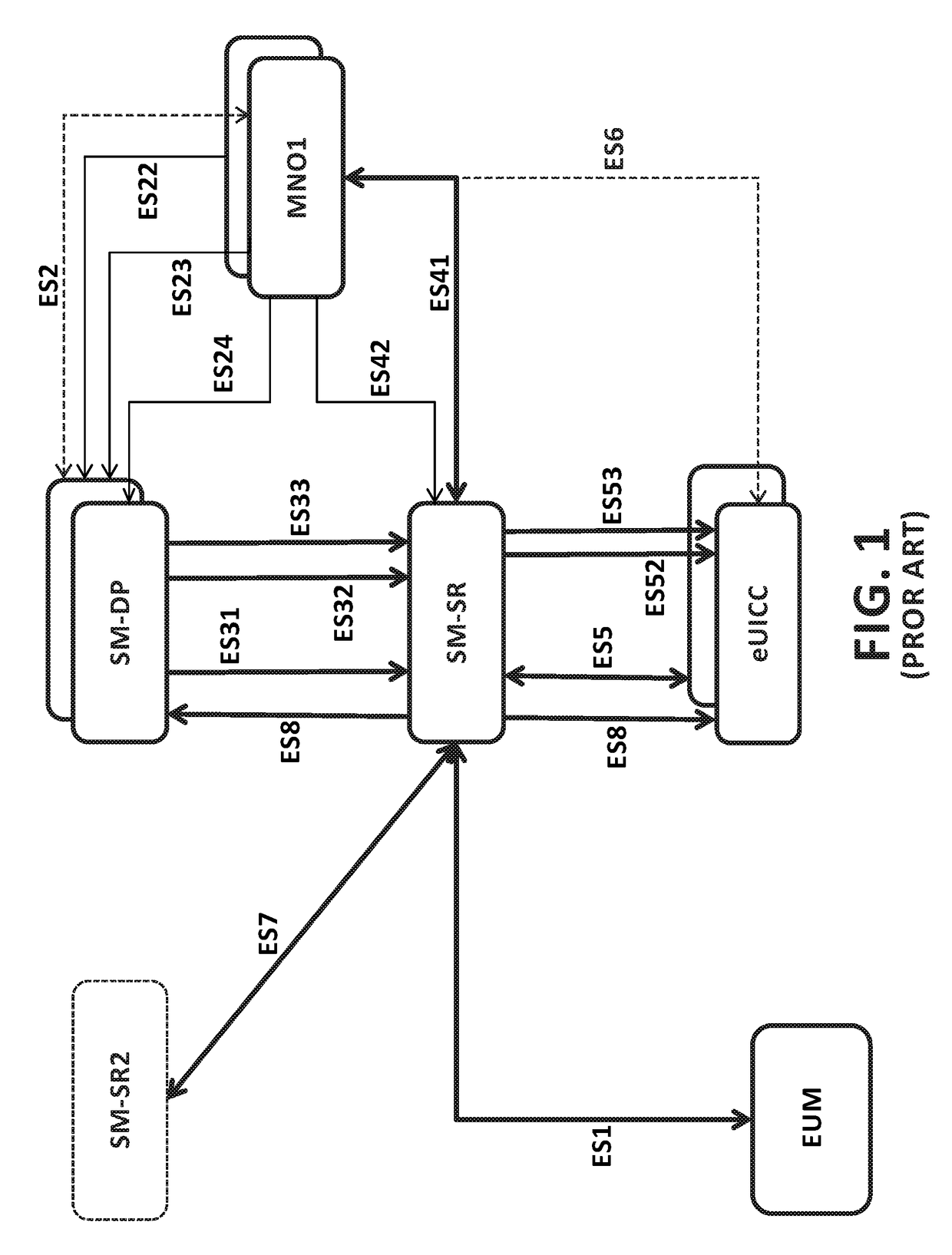One of the mayor problems of M2M (
Machine to Machine) devices (e.g. cars, signs, meters, vending machines) is that when they are being manufactured, they are often empowered with SIMs (
Subscriber Identity Module) or UICC (
Universal Integrated Circuit Card) whose credentials belong to MNOs (
Mobile network operator) of the countries where they have been built or with whom their manufacturers have agreements and they do not have to match to the MNO of the countries where they are going to be marketed.
Besides, during the manufacturing process, the devices are normally sealed therefore replacing SIMs afterwards is extremely difficult.
When devices are finally activated by an end customer, the SIM cards uses the wrong credentials to connect to the network of a different operator in
Roaming making that the cost per use will be quite higher than expected.
And besides it might have regulatory issues, since the legislation of some countries does not allow M2M devices to connect in
Roaming permanently.
People with a
mobile device (or with M2M devices such as e-books) when they travel abroad can experience the same problem.
However, the solution for the SWAP in “Flexible Over-the-Air
Personalization of M2M SIMs” by Telefonica and Giesecke & Devrient (G&D) does not consider the option to change the MNO credentials that are not in possession of another SIM provider different from G&D, or when management platform
connectivity used by the MNO in destination is different from the MNO Jasper
Wireless.
The problem to reach a global solution (in both M2M and mobile devices) is that each MNO manages
connectivity and the network resources differently (including the management and efficient allocation of IMSI and MSISDNs) and each MNO uses its own platform (with its own repositories), and they trust on different SIM providers.
There are few options available to try to reduce the
Roaming surcharges in M2M devices or travellers.
But none of them resolve the problem of how offer a global
connectivity solution:One option for a user when he travels abroad is to purchase a plurality of additional pre-pay SIMs, one for each territory, which the user visits.
This option is not valid for M2M devices (UICC in M2M devices is not easily accessible or replaceable, since many M2M devices are remotely located, often hermetically sealed).
And for users this solution has many disadvantages (users must purchase and carry a plurality of different SIM cards.
Such systems (sometimes called SmartSIMs) are however typically relatively inflexible to changes in
network availability over time (for example a SIM is usually pre-programmed with fixed set of IMSIs, new SIMs need to be issued if additional IMSIs become available—likewise for deletion—).
Other problem is SIM does not have enough knowledge of the network geography and current commercial status to choose the best network or IMSI to use.
Although the described IMSI Broker solves the problem of avoiding the
roaming cost, enabling to change the IMSI used by the SIM from another one that belongs to the MNO where the SIM is located, it does not allow the provision of a global connectivity solution, since the
system disclosed in WO 2013 / 041849 A1 suffers from a series of problems such as:a) Although the described IMSI Broker solves the problem of having IMSIs from different available for SWAP with the use of IMSIs
list or a
pool, WO 2013 / 041849 A1 does not teach when an IMSI is replaced, or whether the IMSI is returned to the pool immediately to be reused or whether it remains blocked and can no longer be used.
In the case that the SIM does not keep using the IMSI after the change of identity, and the IMSI is not returned to the pool, it will remain locked out and may not be used by another SIM, so that resources will be underused.
If the IMSI is returned to the pool or the
list immediately, it could be reused almost again immediately, which may cause faults in the billing to a customer and between MNOs (what a MNO has to pay another MNO in exchange by the usage of its resources network).
When the time of the billing comes, as charges for the use of a SIM that MNO get from their systems are retrieved with a certain
delay (in the next months), it could happen that the consumptions made by the SIM1 would be billed to the SIM2.b) Moreover, WO 2013 / 041849 A1 does not disclose how the pool is managed and how the MNOs load the IMSI on it, and how long the IMSIs remain on the pool.
That can cause that the IMSI will remain in the pool for a long time without being used for the SWAP either.
This same problem happens if there is a set of IMSIs preloaded on the SIM.
The problem of how to obtain and exchange credentials between SIM providers and the SIM is a complex problem since it requires that the exchange will be performed in highly secure manner.
On the other hand, the work on M2M applications has given rise to the possibility of having a UICC that is embedded in a
communication device in such a way that the UICC is not easily accessible or replaceable (many M2M devices are remotely located, often hermetically sealed, their after sale location is not known during production).
The ability to change network subscriptions on such devices becomes problematic, thus necessitating new methods for securely and remotely provisioning access credentials on these Embedded UICCs (eUICC) and managing subscription changes from one MNO to another.
 Login to View More
Login to View More  Login to View More
Login to View More 


